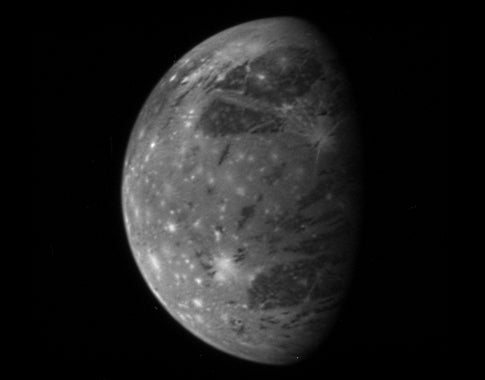The fastest spacecraft ever launched from Earth stole a tiny bit of Jupiter’s orbital energy this morning, picking up speed as it heads toward Pluto and the unexplored Kuiper Belt beyond. New Horizons came within 1.4 million miles (2.3 million kilometers) of the giant planet at 12:43 a.m. EST. The spacecraft hit its 500-mile-wide (800 km) “aim point” perfectly, putting it on course to reach Pluto in July 2015.
As it flew past Jupiter, New Horizons was out of contact with Earth, spending those precious moments observing the jovian system. Mission operators at Johns Hopkins University’s Applied Physics Laboratory in Laurel, Maryland, re-established contact with the spacecraft at 11:55 a.m. EST, confirming New Horizons was healthy and headed for Pluto.
By the end of June, the spacecraft will have completed an intense, 6-month-long systems check, performing more than 700 science observations of Jupiter, its moons, and its ring system. More than half those observations take place this week.
“We designed the entire Jupiter encounter to be a tough test of the mission team and our spacecraft, and we’re passing that test,” says New Horizons Principal Investigator Alan Stern of the Southwest Research Institute in Boulder, Colorado. “We’re not only learning what we can expect from the spacecraft when we visit Pluto in 8 years, we’re already getting some stunning science results at Jupiter — and there’s more to come.” Much of the close-approach science data will be sent back to Earth in the coming weeks.
New Horizons’ instruments have been imaging Jupiter’s turbulent atmosphere, surveying its dusty rings, mapping the composition and topography of the four Galilean moons -Io, Europa, Ganymede, and Callisto — and examining the planet’s vast magnetic cocoon. During the next few months, it will make the first journey down the long “tail” of Jupiter’s magnetosphere, a stream of charged particles that stretches more than 100 million miles (160 million km) from the planet.
On January 19, 2006, New Horizons left Earth at 36,000 mph (58,000 km/h). It covered the 500 million miles (800 million km) to Jupiter in little more than a year — faster than any of the previous seven spacecraft to visit the planet — despite slowing down on the way as the Sun’s gravity tried to pull it back. The Jupiter gravity assist increases New Horizons’ speed by nearly 9,000 mph (14,000 km/h), to 52,000 mph (83,600 km/h). It has roughly 2.5 billion miles (4.0 billion km) to go.
Read Principal Investigator Alan Stern’s blog about the Jupiter encounter on Astronomy.com, and keep returning to our web site for updates on science results.










